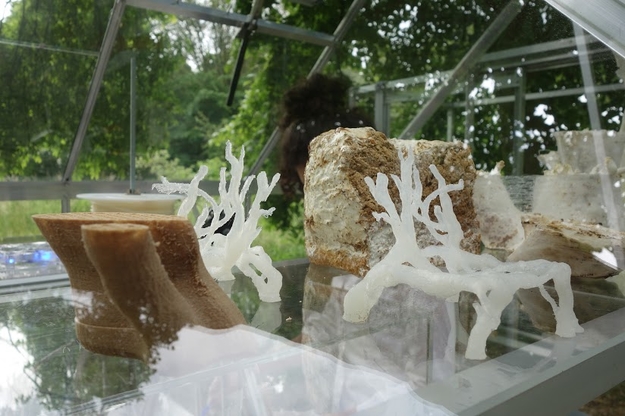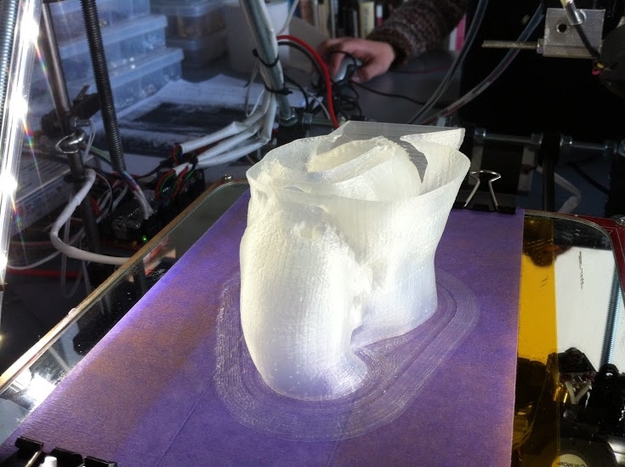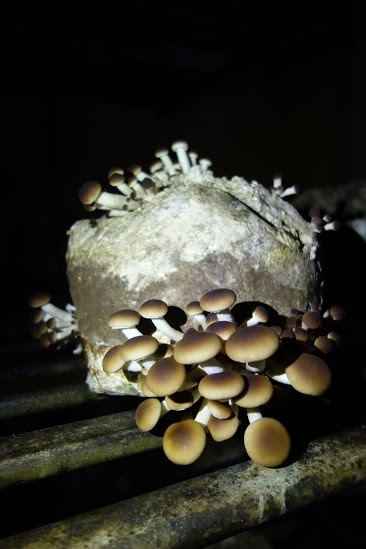Experimenting with raw materials
In his work, Eric Klarenbeek is searching for unexplored connections between materials. He seeks new meaning in objects. To do this, he uses experimental raw materials for printing material such as organic straw substrate for mushroom growing and potato peels for bioplastics.
Klarenbeek explored various 3D-printing techniques using living organisms such as mycelium; which is the vegetative part of a fungus. His most recent project is the myceliumchair, a chair in which 3D printing and living materials are mutually intertwined.
The Myceliumchair: how does it work?
Klarenbeek has printed a chair from a straw substrate, with a thin coating of bioplastic, that supports the construction. He constructed a substrate with mycelium that is thin enough to be printed by a 3D printer. After the printing is done, the mycelium slowly grows into a strong substance. Once this chair is fully grown, it should be solid enough to support a person.
This chair is a metaphor for what can be realized with materials and production methods.
Eric Klarenbeek explained more about the printing of living furniture and biomaterial research during one of our previous events: Event Mediamatic Bio Industry - 8th of January.



